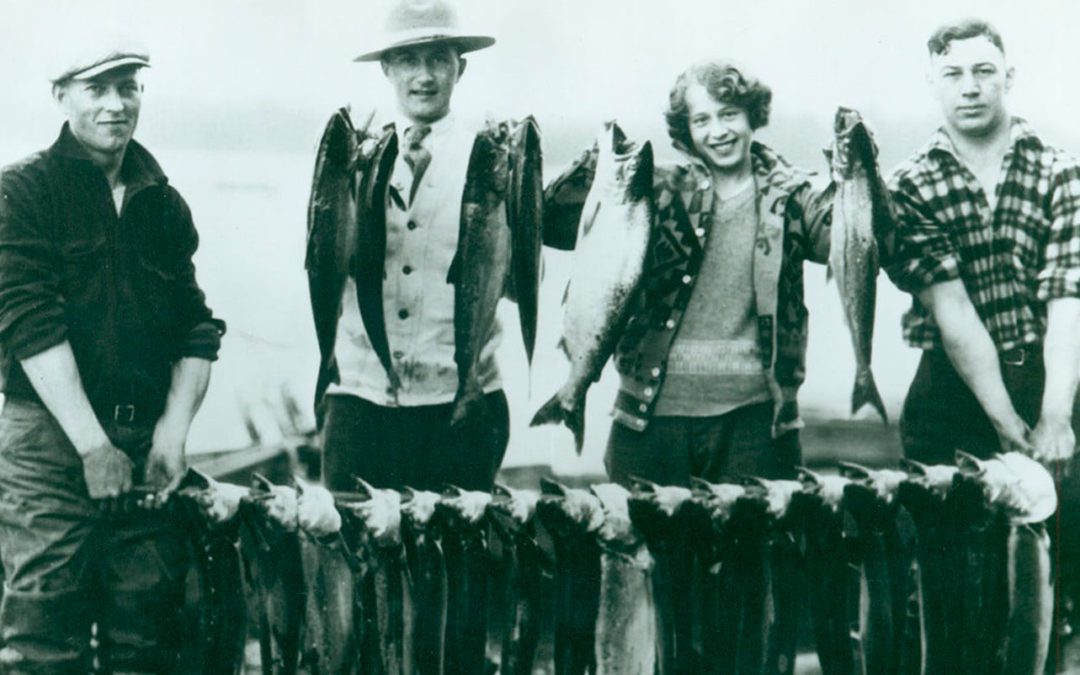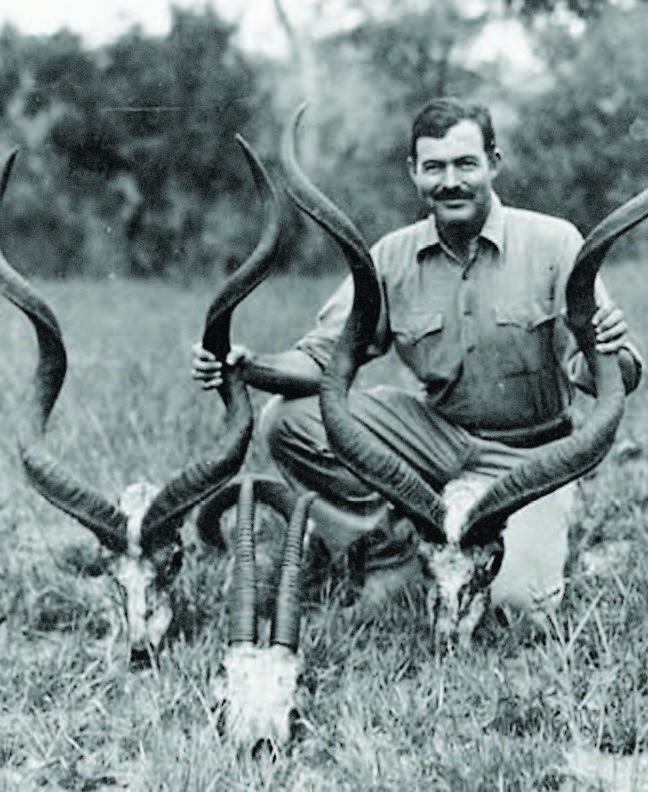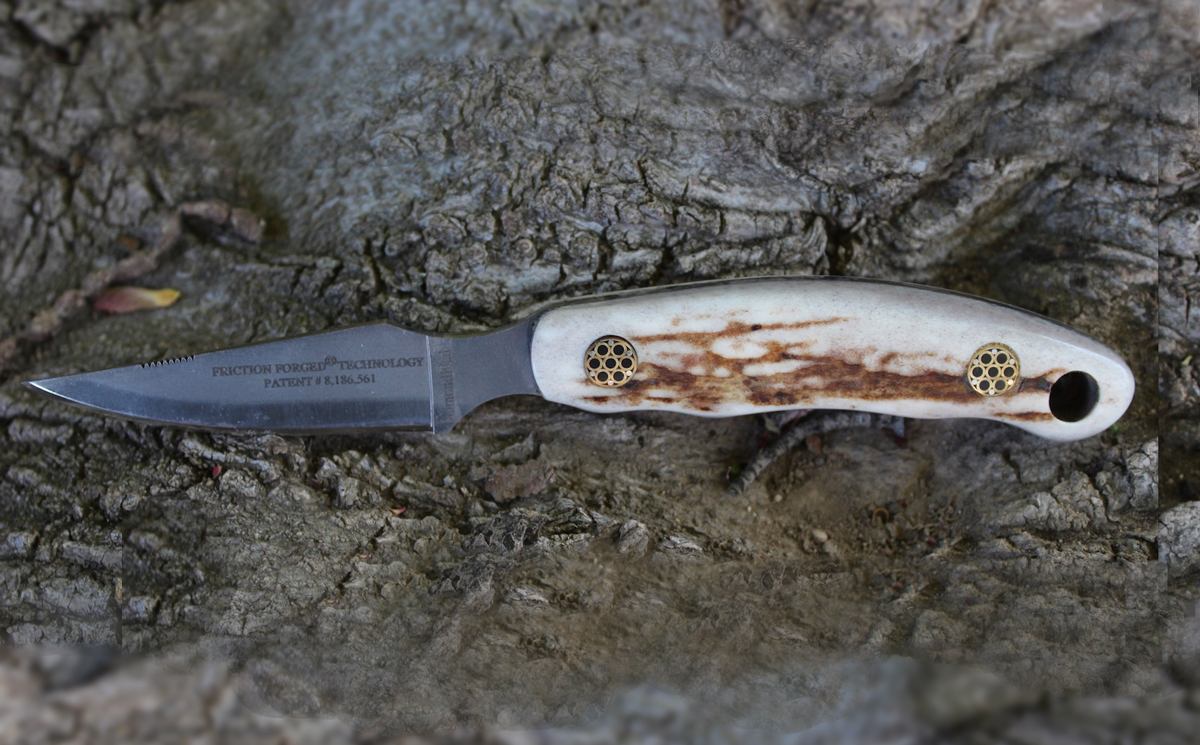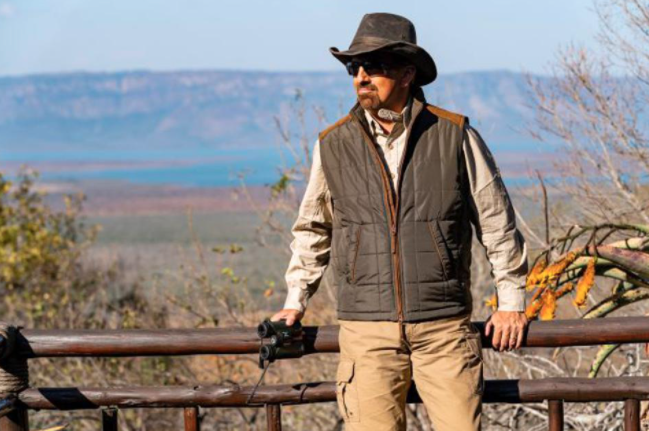Eddie Bauer set out to create a jacket – he ended up creating a successful and innovative company and helping win World War II.
Just in case you don’t believe truth is stranger than fiction, consider that the down-filled parka that got you through the winter might never have come into being if it hadn’t been for Catherine the Great, Empress of Russia. The influence of German-speaking people in Russia actually goes back to the reign of Peter the Great, the first tsar ever to travel to western Europe and the man who in a single generation moved Russia from medieval times into the modern age. Well, modern for the early 1700s anyway. But when the German-born princess Catherine the Great married Tsar Peter the Third, she brought German mercenaries with her to the land she would eventually rule, including Eddie Bauer’s ancestors. That martial spirit would have a direct influence on Eddie Bauer and his signature down-filled clothing.
Initially, Germans in Russia were granted special privileges, but in 1871 tsar Alexander II issued a ukase rescinding those rights, and in the next 30 years, thousands of German-speaking Russians emigrated. Eddie’s parents immigrated to the Seattle area in 1890, and Eddie was born on Orcas Island in 1899. He grew up fishing and hunting and – like most children of immigrants – working hard, as a caddie at a country club, doing odd jobs, cutting firewood, caring for some of the first pheasants imported to the Northwest, and as a clerk at a sporting goods store where he built up a reputation as a good fisherman, hunter and a first-rate shot.
When Eddie was still only six or seven, an uncle, a Russian army veteran and survivor of the Russo-Japanese War of 1904-1905, also moved to the Seattle area and told Eddie tales of his experiences in that war.
“He had been run through from front to back with bayonets many times,” Eddie wrote later, “through the arms, shoulders, neck and chest. How he could survive was miraculous.”
He showed Eddie the scars, and he also told him of the down-filled clothing the soldiers wore, clothing that enabled them to survive winter weather just as deadly as Japanese bayonets. The scars and the clothing both stuck in the boy’s mind.
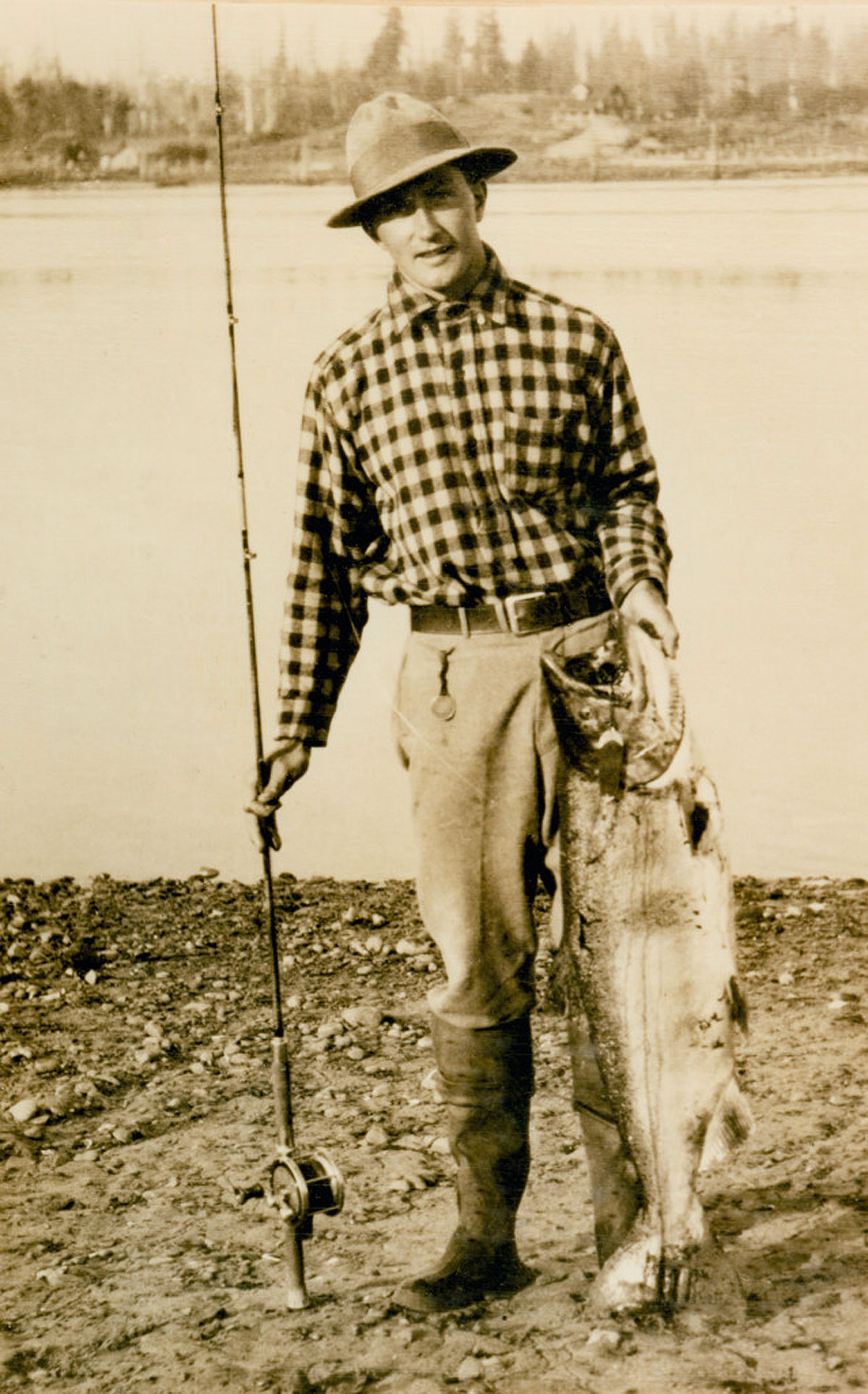
No Such Thing as Bad Weather, Only Inappropriate Clothing
Eddie eventually opened his own store, selling sporting goods and hunting and fishing gear. He was popular, easy-going, handsome, hardworking, knowledgeable about the gear he sold and the activities he sold them for, and he did well. He not only survived the Great Depression, he actually expanded his business. He married the girl who became his wife of 57 years. (Just a modestly enthusiastic sportswoman herself, Christine “Stine” Bauer won the Washington State Women’s Trapshooting Championship eight years in a row, something that might have made a lesser man hate her.) He had a son. Life was good.
And then one of those accidents occurred that cause a whole series of disparate pieces of knowledge and information to snap together, like magnets, forging a whole new way of doing something.
He went on a fishing trip with a friend on the Olympic Peninsula. They separated, and when a freezing rain started, Eddie’s clothing became soaked through. The temperature continued to drop, and in a matter of minutes his clothes and backpack were covered with a layer of ice and he began to feel drowsy. By the grace of God he had a gun with him, and he had the wit to fire a three-shot signal to his friend. By the time his friend found him, Eddie was sitting under a tree and already dozing off from hypothermia.
The incident brought back the memories of his scarred uncle and his stories of the down-filled clothing Russian soldiers wore to survive the brutal Manchurian winter. Eddie Bauer set out to create a jacket; he ended up creating a revolution.
For the first time, the American public had a lightweight coat that would keep the wearer warm at sub-zero temperatures.

Today, we are so used to super-warm, lightweight clothing and gear that it’s hard to remember what it was like before. Countless companies in every corner of the globe have made clothing ideally suited to their weather conditions. As Sir Ranulph Fiennes (The Guinness Book of World Records designated greatest living explorer, prolific author and cousin of the two actors of the same surname) has said, “There is no such thing as bad weather, only inappropriate clothing.”
But so much of what was made prior to today’s synthetic miracle fibers was predicated on old ways of thinking. Wool is a great insulator, but it gets very heavy when wet, so the solution was to shrink the fibers and weave them as tightly as possible to increase water resistance. The problem is that the resulting fabric is still heavy even when dry. Waxed cotton is an effective water repellent, but the treated fabric is heavy, and old wax formulas were smelly and brittle and didn’t last that long. The formula has been improved greatly over the years, but the fabric is still heavy, especially when coupled with wool for warmth.
Goose down, on the other hand, is not only remarkably effective as insulation, it can be greatly compressed and will bounce right back without losing any of its insulating properties; it breathes; it’s durable; it will keep its loft for as long as the garment endures; and it’s very lightweight.
Eddie had a sample jacket made, and gave it to a friend and business associate who tested it, liked it and agreed to manufacture it. (All Eddie Bauer products are tested, originally by Eddie Bauer himself or friends who were serious outdoorsmen, today by guides around the world, before they are offered to the public.) Eddie took out a small ad in Field & Stream, and for the first time, the American public had a lightweight coat that would keep the wearer warm at sub-zero temperatures.
A Reputation for Excellence
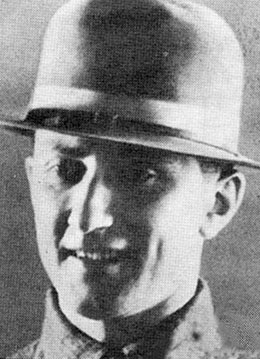 Enter the U.S. Army. Those of us born after the exciting little interlude known as World War II don’t realize to what extent American life was disrupted. It wasn’t like the wars of today, with a very small segment of the population bearing the brunt of service and sacrifice. Following the bombing of Pearl Harbor, almost every American family was affected, either directly or indirectly. Rationing and requisition were the order of the day, and Eddie Bauer pitched in along with everyone else, supplying cold-weather gear, both his own and his competitors’ impartially.
Enter the U.S. Army. Those of us born after the exciting little interlude known as World War II don’t realize to what extent American life was disrupted. It wasn’t like the wars of today, with a very small segment of the population bearing the brunt of service and sacrifice. Following the bombing of Pearl Harbor, almost every American family was affected, either directly or indirectly. Rationing and requisition were the order of the day, and Eddie Bauer pitched in along with everyone else, supplying cold-weather gear, both his own and his competitors’ impartially.
Then the War Production Board requisitioned his fabrics and goose down and other materials, so while Eddie continued to produce goods for the war effort, he had to find substitute materials for civilian use, starting with eiderdown. Even then, the War Production Board restricted the sale of those products to people whose occupations compelled them to work outside during the winter.
Next, the Army asked Eddie to help them develop an alternative to the scarce waterfowl feathers, and he was able to come up with a chicken feather substitute suitable for sleeping bags. To do so, Eddie had to create subsidiary companies, out of his own pocket and at his own risk, but at the height of the war effort, 400 people working three eight-hour shifts around the clock were producing 120,000 sleeping bags a year.
How good could those chicken feather, rushed-production bags possibly have been? In 1959 my father bought me a surplus World War II army sleeping bag for my first-ever camping trip. I was only 11 and small for my age, so the bag was about four feet longer than I needed, but I used it for almost ten years, including on two bitterly cold winter camping trips in Germany, and if it hadn’t been lost or stolen during a move, I might still be using it. Short of setting the bag on fire, it was indestructible.
But probably the most extraordinary product Eddie Bauer came up with during the war was something the Army Air Force (there was no independent military branch of the Air Force in those days) called a “Cold Weather Buoyancy Flight Suit.” The requirements were childishly simple: it had to keep a stationary man warm for three hours at 70 degrees below zero; and it had to be buoyant enough to keep a man with 25 pounds of gear afloat for 24 hours.
Another man might have considered switching to a career in aluminum siding at this point, but Eddie Bauer got it done. Not only did he get it done, he was also smart enough to sew the “Eddie Bauer, Seattle, USA” label into each coat, with the result that by the end of the war, a small regional company had earned a nationwide reputation for excellence.
Creating a successful and innovative company, and helping to win World War II, are fine and admirable and all that, but let’s talk about important things. Let’s talk about dogs. Wanapum is the name of a Native American tribe that lived along the Columbia River. It’s also the name of a village, a dam, a state park, and it was the name Eddie Bauer adopted for the kennel he started in 1960, the kennel that in 1974 earned him the Professional Retriever Trainers Association “Breeder of the Year” award, the kennel that produced some of the most successful dogs in Labrador history. It is still a bloodline known and recognized by Lab aficionados across the country.
The Greatest of All the Great Dogs
Eddie’s love affair with Labradors began in 1930 with a dog named Blackie that he bought in Canada. Blackie was the very first Lab in Washington State, and the year is significant.
The late Richard Wolters, who wrote one of the definitive (and best illustrated) histories of the Labrador retriever, pointed out that prior to the late 1920s and 1930s the American sportsman “…understandably took little interest in the Labrador. What could the Labrador do for him that his own American dogs” [notably the Chesapeake] “could not do?” Wolters goes on to document that the Lab’s gradual acceptance in America was largely due to wealthy Americans aping British aristocracy, from Scotch whisky to “best” shotguns built by the finest London firms, to driven shoots where the famous guns could be used. In the eastern U.S., the established sporting clubs imported Scottish gamekeepers for managing this kind of shooting. The seriously wealthy did the same thing on their private estates. And with the guns and the gamekeepers came the Labradors favored by the British royal family and their aristocratic cousins.
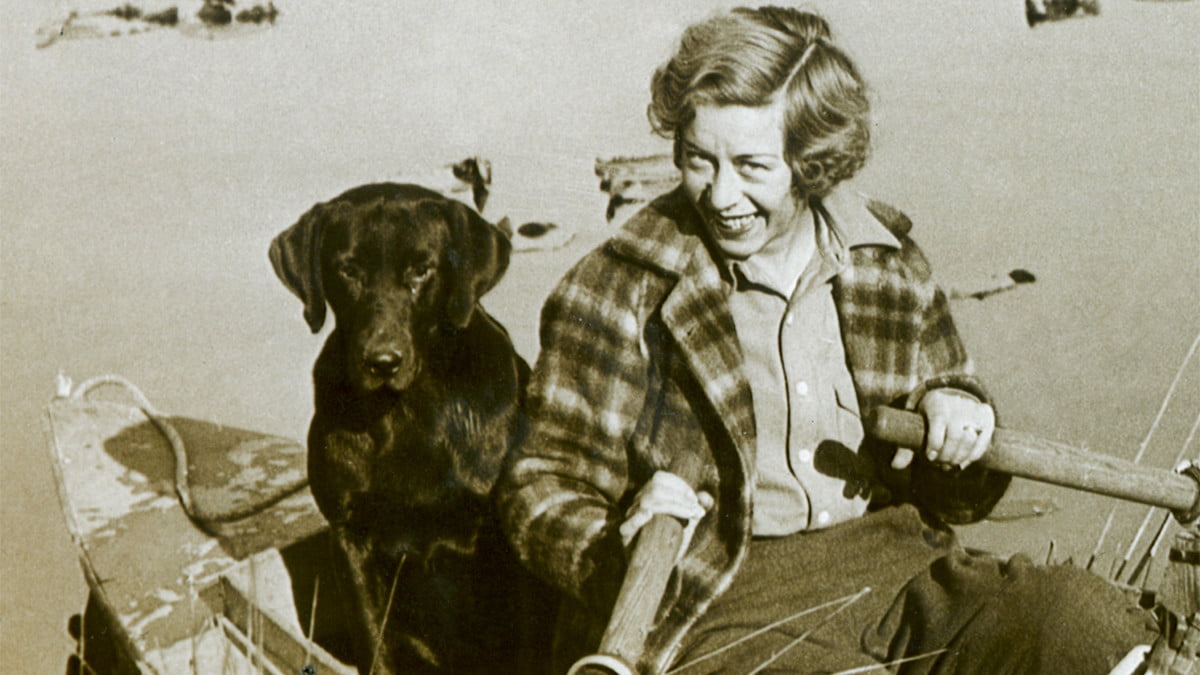
Less affluent American sportsmen enjoyed rougher and more homespun hunting, with rougher and more homespun dogs. But in the Pacific northwest, a quintessential American sportsman – the son of immigrants, hardworking, self-made, successful, innovative and smart enough to recognize quality when he saw it – fell in love and paid $65 for a Lab named Blackie. (Keep in mind that in 1930 the Depression was in full swing, the average annual salary in America was between $500 and $1,500, and if you earned $2,000 you considered yourself well-heeled.)
It was the beginning of a life-long love affair with Labradors, but – as is usually the case when a man falls in love with a specific breed – it was Blackie’s memory that lingered, even after all the years and awards and accolades, so that Eddie would finally write:
“The greatest of all the great dogs I have ever known; one I have loved above all others. I hope, when I go to the Happy Hunting Grounds, Blackie will come to my side, as I will try to go to his.”
A company that expands is like a waistline that expands. Both require some re-tailoring.
Over the years the Eddie Bauer Company has grown and diversified, ownership has changed, and its focus has sometimes changed as well, with more emphasis put on Himalayan expedition gear (multiple ascents, starting in 1963 and continuing through 2009) than on hunting gear. But what has never changed is the relentless, single-minded emphasis on excellence, whether for casual wear or camping gear.
In the old days Eddie and his friends tested his stuff himself before he offered it to the public. That philosophy is the cornerstone of the company’s new Sport Shop. Every product is carefully and thoughtfully designed, engineered and built for its intended activity, before being tested repeatedly by a network of guides.
Rugged Testing and Innovation
Let’s talk about the design part.
Like a fine hunting dog, Rebecca Etchen Peters has practically been line-bred for shooting and hunting. She started hunting at 12. Her great-grandfather, Fred Etchen, was the captain of the trapshooting team that won the gold medal in the 1924 Olympics. Her grandfather, Rudy Etchen, was a world-ranked shooter his entire life. Her father, Joe Etchen, is a trap-shooting champion who now owns one of the finest gun stores in the country.
Rebecca has won the Women’s Trapshooting Handicap event at the Grand American National Championships, the Women’s Trophy in the George McCarthy Handicap at the same event, and was runner-up in the under 14 Pennsylvania Resident Singles Championship. In short, she is – like Christine “Stine” Bauer – a thoroughly detestable young lady. And like many other sportswomen, she grew tired of looking like a seven-year-old wearing Daddy’s clothes every time she went into the field. As the Sport Shop Expert, she has helped develop – and has tested – the entire Sport Shop line of hunting, fishing and shooting clothes made specifically for women.
“Our focus is on product testing and innovation,” Rebecca said, “with the best fabrics, attention to detail, function, updated design, and with the same guide-built, guide-tested mentality that went into the First Ascent line.” (The gear created for the Mount Everest expedition of 2009.)
The men’s line is overseen by John Burrell, a certified wildlife biologist, outfitter, head of the award-winning High Adventure Company, three-time winner of Sporting Classics’ Award of Excellence, outfitting expert for ESPN’s Under Wild Skies and the current co-host of Brush Country Monsters on the Sportsman Channel. Burrell is also a veteran of more than 30 African safaris and countless hunting trips around the world.
“Rebecca and I work with the designers,” John told me. “We test the prototypes ourselves and make any changes we feel are necessary before the product is sent out to other guides, so any new product is thoroughly tested before it is offered to the buyer.”
There is a third member of the team who was not available for a telephone interview. Eddie, the black Lab, is a skilled hunter and field competitor, as well as the official Ambassador-at-Large for the Sport Shop, and it’s a safe bet the spirit of Eddie Bauer is there at the corporate headquarters, scratching the ears of his namesake dog.
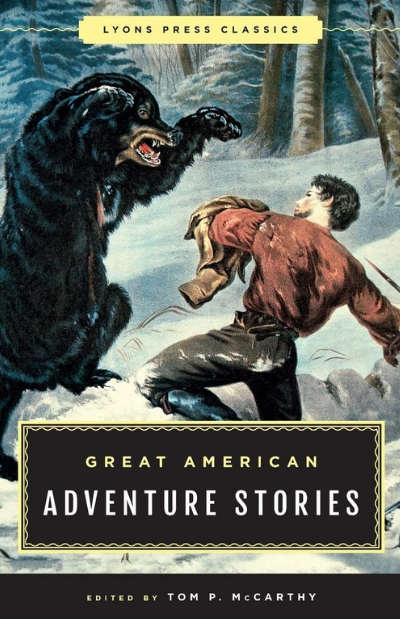 Great American Adventure Stories contains page-turning accounts of the Galveston Hurricane, the Alaska Gold Rush, a robbery featuring Jesse James, an eyewitness account of the Johnstown flood, and much more. For a taste of the American frontier, Daniel Boone and famed scout Kit Carson depict what they saw and experienced as the country expanded and blossomed in the West. These accounts all have one thing in common: They capture the grit and spirit of people who made America what it is today.
Great American Adventure Stories contains page-turning accounts of the Galveston Hurricane, the Alaska Gold Rush, a robbery featuring Jesse James, an eyewitness account of the Johnstown flood, and much more. For a taste of the American frontier, Daniel Boone and famed scout Kit Carson depict what they saw and experienced as the country expanded and blossomed in the West. These accounts all have one thing in common: They capture the grit and spirit of people who made America what it is today.
Created for adventure addicts there has never been a more exciting collection of stories that celebrate the indomitable spirit of the American character. Shop Now

